History of Morihei Ueshiba's Aikido
Morihei Ueshiba, born outside Osaka, Japan in 1883, travelled to Tokyo in his late teens to seek martial arts training.

Aikido was founded by master Morihei Ueshiba who lived to be 86 years old. Born outside Osaka, Japan in 1883, Ueshiba travelled to Tokyo in his late teens to seek martial arts training. Although he investigated many systems he concentrated on Yagyu Shinkage Ryu (kenjutsu), the Hozoin Spear Style (sojutso) and Tenji Shinyo Ryu (jujutsu). Each practice emphasizes a spiritually and physically healthy body.
Ueshiba served in the army during the Japanese-Russo War. When the war ended in 1904, he was discharged back into civilian life. He then travelled to Hokkaido, Japan, where he witnessed the practice of Daito Ryu Aiki-Jutsu. The classes he observed were taught by Sokaku Tekeda.
He was so impressed with the power of Aiki-Jutsu he obtained a license to teach the Daito Ryu System.
Ueshiba practiced Daito Ryu, Kenjutsu and Sojutsu for more than a decade in Hokkaido, before leaving to visit his ailing father. While traveling to his father's home he met OniSaburo Deguichi, leader of the Omotokyo religion. Omotokyo or Oomoto, was a form of Shintoism. Having been raised in a environment of strict discipline and religious training, Ueshiba was attracted to Deguichi's teachings. He soon became one of the Deguichi's disciples.
Ueshibahad Sought to Unite His Spiritual Beliefs with His Budo Prowess
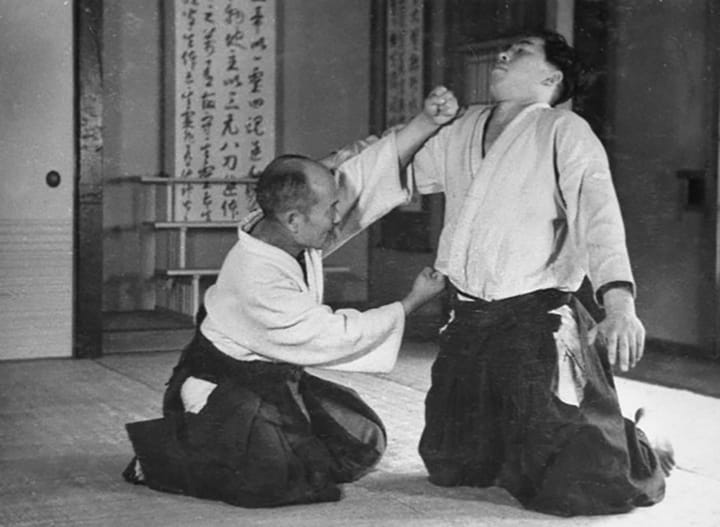
Throughout his life, Ueshibahad sought to unite his spiritual beliefs with his martial arts training. The combination of his Budo prowess, his insight, and his deep spirituality led him to the revelation.
"The Source of Budo is God's love, the spirit of loving protection for all beings. True Budo is to accept the spirit of the universe, to keep the peace of world, and to correctly produce, protect, and cultivate all beings in nature."
Morihei Ueshiba realized that the truly critical struggle in man was not physical combat, but rather one's internal confrontation with the forces that lead the person out of harmony with the spirit of the universe. Aiki-Jutsu is a very effective system that employs jointlocks, throws, punches and kicks.
Like the early kenjutsu and jujutsu systems Aiki-Jutsu is mainly combat oriented. The combat aspect of Aiki-Jutsu did not conform to Ueshiba's vision of physical and spiritual art, balanced and unaggressive. To fulfill his desire to teach a balanced and unaggressive art, he developed Aikido (way of harmony). For this art he laid down a principle of nonresistance, the nonviolent way of self-defense. Once he had fully developed his system, he began teaching selected people. This was in the early 1940s. When World War II broke out, Ueshiba returned to the country.
After the war, when he saw that his countrymen were turning their interests from spiritual to material matters, he decided that Aikido could encourage a rebirth of the spirit. His intention was to spread the teachings of Aikido throughout the world. To achieve this end he sent his finest students abroad to teach, Aikido soon grew into over 30 subsystems practiced throughout the world.
The Physical Side of Aikido Develops Rhythmic Movement and Physical Fitness
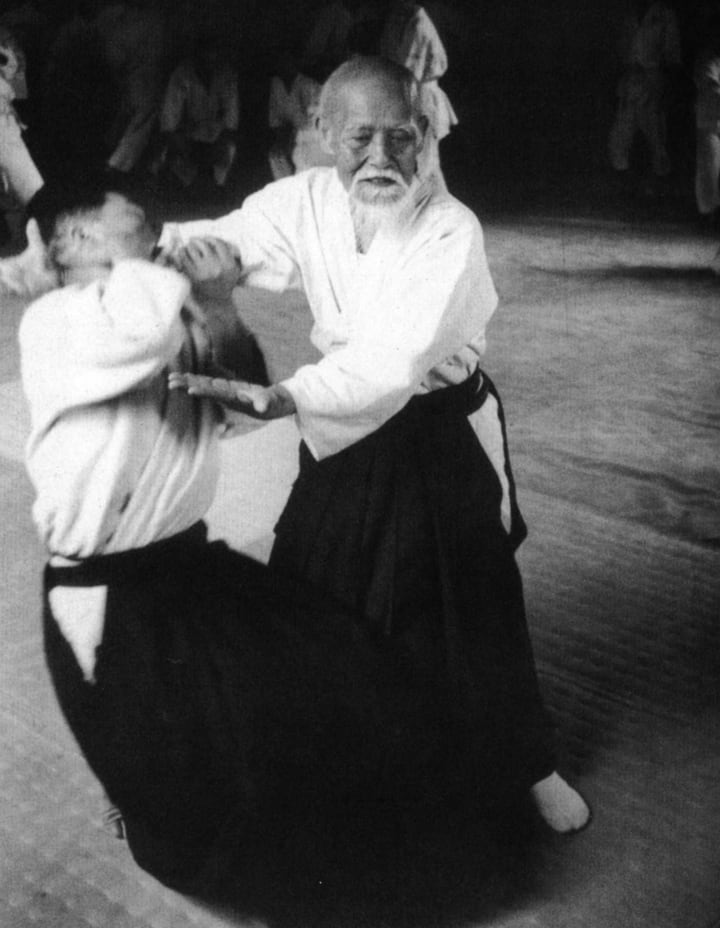
Aikido offers four basic advantages to its practitioners; it develops rhythmic movement and physical fitness, both integral parts of self-defense training; it promotes strength and suppleness in the joints and limbs through twisting, bending, and stretching movements that also free the limbs from harmful adhesions. It increases the practitioners awareness of posture and good body alignment, and improves reactions, perception, and coordination. In Aikido, a student learns to use an opponent force by bringing it into his own circle, neutralizing aggressive action by gaining control of the attacker.
Traditional Aikido is essentially non-combative, emphasizing throwing and joint lock techniques, it emphasizes principles of non conflict and cultivation of ki. Aikido's primary aim is a healthy mind and body and a wholesome spirit. Non-resistance in Aikido is not only physical; it is also mental and spiritual. To the western mind the word pliable is perhaps a more accurate way to describe this state; if pushed, move with the push, if pulled, move with that motion, blending with the attacker's movement and direction of power.
Akido Is Still Primarily Meant to be a Passive Form of Self Defense
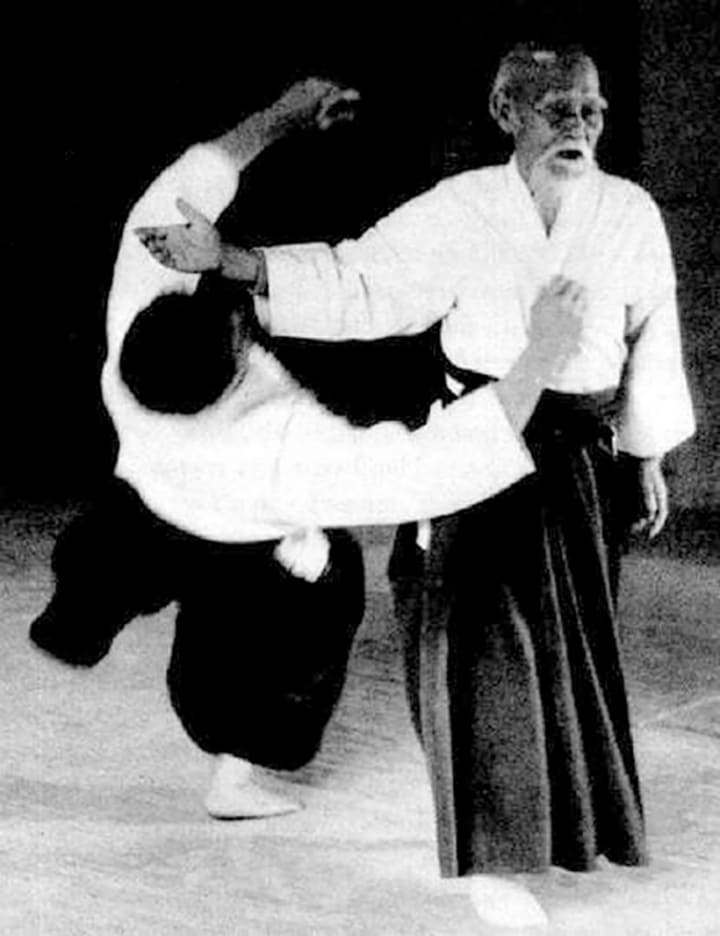
Martial arts stress non violence and the development of a wholesome spirit that is also an effective self-defense system. Traditional Aikido is an excellent martial art that teaches many fine techniques and philosophies. In the beginning and intermediate levels its self-defense value is marginal. But its discipline is invaluable.
Students in the lower ranks learn a few locks and takedowns that are practiced against cooperative attackers. The uke (attacker) must cooperate or he would risk injury from the joint locks. Because of this cooperative effort between the attacker and defender, it takes a long time for a student to become proficient enough to defend himself. Traditional followers of Morihei Ueshiba's Aikido do not practice defenses against armed attackers or attackers who kick. Many Americanized versions of Akido, include kick defense and weapons training. The additions are more reflective of the American need for a more combat oriented practice, though at its foundation Akido is still primarily meant to be a passive form of self defense.
Steven Seagal's New Akido
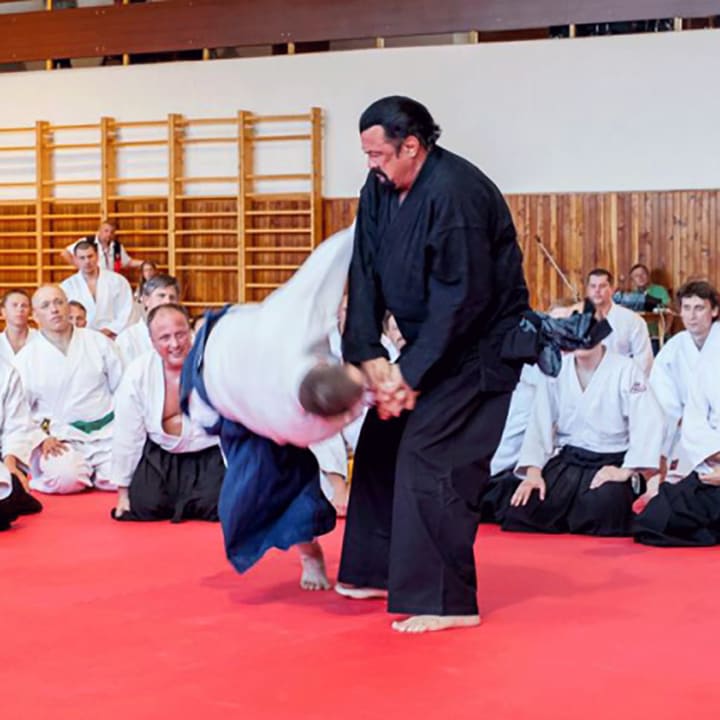
When asked about the devastating Aikido portrayed by Steven Seagal in his 1980s movies, Akido masters have said that the techniques used by Seagal were reflective of a combination of his Karate, Kenjutsu, and Aikido training. He further felt that Seagal's type of Aikido was very much like the Aiki-Jujitsu that Morihei Ueshiba originally studied. Seagal favors favors the kicks, punches, and join breaks that are contained in Aiki-Jujitsu.
Steven Seagal's Aiki-Jujitsu techniques are similar to classic instructors like Miguel Ibarra and Bernie Lau. Like the early eclectic movement in Karate, Aikido experienced a rebirth as an effective means of self-defense training and became a favorite among American martial arts practitioners.
To make teaching more realistic updated schools for the 21st century have added defense drills against armed attackers and the use of Aikido Jujitsu strikes that can be used when join locks and throws can not be applied. Aikido can be taught as both a traditional martial art and an effective self-defense system even involving multiple weapons prsctice. By teaching students to defend themselves against more realistic attacks they will be more prepared in case they face the real thing. Ultimately though, the benefits of Aikido have as much to do with the spiritual well being of the students then the physical nature of their practice.
About the Creator
Alicia Springer
Mother of two. Personal trainer. Fitness is about determination, not age.
Enjoyed the story? Support the Creator.
Subscribe for free to receive all their stories in your feed. You could also pledge your support or give them a one-off tip, letting them know you appreciate their work.




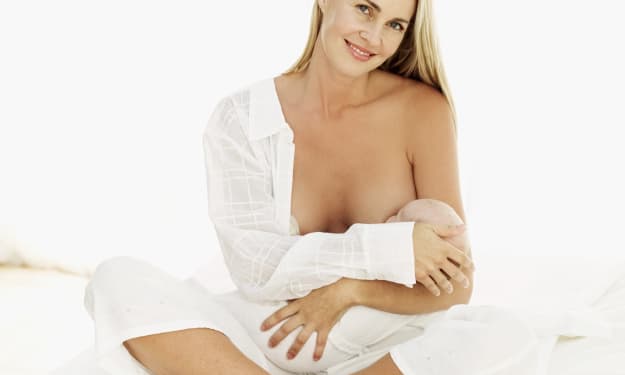

Comments
There are no comments for this story
Be the first to respond and start the conversation.